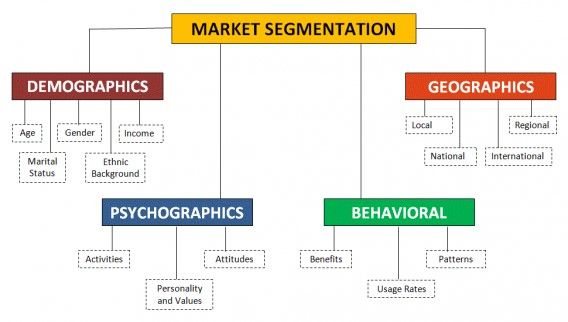
Psychographic characteristics are important because they provide a much narrower and targeted view of the customer or consumer. Psychographics move the business closer to the right customers and consumers who are likely to buy their products and services.
Until recently, however, it was a lot harder to get psychographics than demographics, and even if you had psychographic data, it wasn’t easy to act on. The internet has changed the relative importance of demographics and psychographics to marketers by making psychographics more accessible.
Understanding these kinds of psychographic differences, will enable a business to make use of online marketing tools, which will turn your insights into actionable interventions that was nearly impossible before the heyday of Google, Facebook, and Twitter.
Keletso Nkabiti, head of strategy from Idea Hive, a renowned digital marketing agency gives us an example, “If you were to apply demographics to a population, you might find there are 500,000 people aged between 24 and 40 years. However, when you overlay this with psychographic characteristics such as the potential customers likelihood to be concerned with their health and appearance, their personality being outgoing and adventurous, and their values in relation to spending time with the family being regarded as important, you might discover that the 500,000 people in this age group has dropped dramatically to 150,000 people”.
Target more effectively
From a profiling perspective, this filtering process is regarded as a benefit. You are using psychographics characteristics as a tool to target more effectively who you want to attract to purchase your products or services, increasing your opportunity of converting a potential customer or consumer.
“Psychographic segmentation provides valuable insights into what encourages a consumer. It gives us a glimpse of the needs, wants and values of users. With this information, marketers can communicate with their target audience more effectively. Psychographic data lets us create extremely personalised messages and content, as well as facilitating smarter keyword targeting”, Nkabiti adds.
The internet has made these kinds of psychographic differences much more apparent and relevant to both consumers and marketers alike. It also makes it easier to find like-minded individuals, so people spend more and more time engaging with people who share their interests and attitudes, even if they’re from a different community or country.
These online clans help to consolidate psychographic differences, and lead people to identify more and more with their communities of interest or value, rather than their geographic or demographic community.
It is imperative to accurately understand your Customer persona. Psychographics are the attitudes, interests, personality, values, opinions, and lifestyle of your target market. Psychographics are incredibly valuable for marketing, but they also have use cases in opinion research, prediction, and broader social research.

What’s the big benefit of psychographics for marketing?
Essentially, if you know how people choose and compare products in your category, you know how to structure and prioritize content:
Psychographics tell you why people buy. They help you build robust user personas. They help you craft the right message and put it in the right place. They’re less objective and clean, but— for a marketer—they’re super useful.
Types of psychographics
Personality
Personality is the psychographic segmentation that identifies the users behind the data. Who they are, how they usually behave, and how they will behave under certain circumstances? Brands usually identify the personality traits of their target customers and create a personality trait most attractive to them.
Status
Social status segmentation is not only about income level, social background but also about where the customers are currently in life. For example, are your customer high schoolers, university students, married, or single? This can be the current customers’ social status or social status they ultimately aspire to attain.
Lifestyle
Lifestyle refers to the customers’ lifestyle patterns. How do they start and end their day? What do they do on the weekend and how do they spend their free time? With a good understanding of consumer lifestyle and habits, marketers can curate marketing messages that speak at the right time.
Value (Opinion, Attitude & Interest)
Values, perhaps one of the most important psychographic segmentation out there. It examines what your customers believe in, what’s their opinion and attitude is on a certain subject and explores their hobbies and interests. What do they value in life? This could revolve around themes such as religion, politics, gender, environment, cultural issues, arts, and sports.

Based on the values that customers hold, brands know when to talk about a specific issue, send messages to fuel their customers’ interest, and encourage purchase.
Many companies use multiple buyer personas for each stage of the conversion funnel and incorporating psychographic data into your existing personas is crucial to ensure your campaigns hit the mark. It provides the potential for more personalised messaging, a clearer and more comprehensive profile of your ideal customers for new hires, and ultimately, more effective marketing campaigns overall.
For brands and marketer’s, psychographic segmentation is a great tool. There are so many benefits but, in the same sense, there are also difficulties or drawbacks. For one, psychographic data is more difficult to obtain than, say, demographic data. Also, when putting psychographic segmentation into play, guidelines should be set to ensure that the data is not misinterpreted, and is used accurately, securely and for the right purpose. Partnering with a digital specialist that understands how to manifest your psychographics is then critically important.
By accurately utilising the data available to you, understanding your consumers’ preferences, interests, values and so on, you will be able to view your customers as unique, individual people and provide the best user experiences possible, increasing your brand affinity, hence, strengthening customer loyalty.